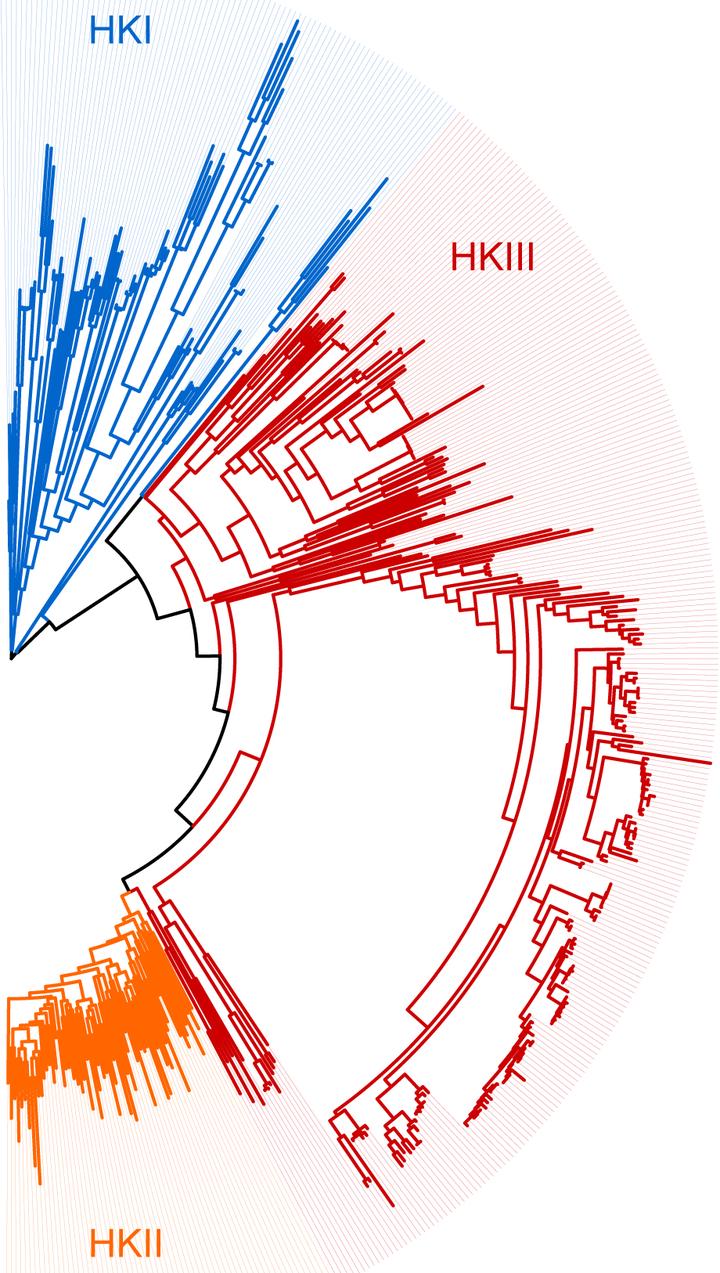Class III histidine kinases: a recently accessorized kinase domain in putative modulators of type IV pili based motility

Abstract
Histidine kinases are key components of regulatory systems that enable bacteria to respond to environmental changes. Two major classes of histidine kinases are recognized on the basis of their modular design: classical (HKI) and chemotaxis specific (HKII). Recently, a new type of histidine kinase that appeared to have features of both HKIs and HKIIs was identified and termed HKIII; however, the details of HKIII’s relationship to other two classes of histidine kinases, their function, and evolutionary history remain unknown. Here, we carried out genomic, phylogenetic, and protein sequence analyses that allowed us to reveal the unusual evolutionary history of this protein family, formalize its distinctive features, and propose its putative function. HKIIIs are characterized by the presence of sensory domains and the lack of a dimerization domain, which is typically present in all histidine kinases. In addition to a single-domain response regulator, HKIII signal transduction systems utilize CheX phosphatase and, in many instances, an unorthodox soluble chemoreceptor that are usual components of chemotaxis signal transduction systems. However, many HKIII genes are found in genomes completely lacking chemotaxis genes, thus decoupling their function from chemotaxis. By contrast, all HKIII-containing genomes also contain pilT, a marker gene for bacterial type IV pilus-based motility, whose regulation is proposed as a putative function for HKIII. These signal transduction systems have a narrow phyletic distribution but are present in many emerging and opportunistic pathogens, thus offering an attractive potential target for future antimicrobial drug design.